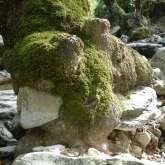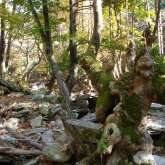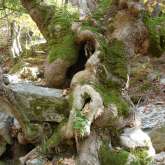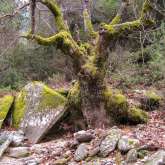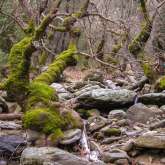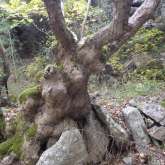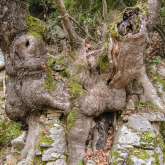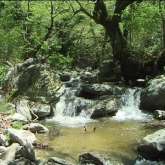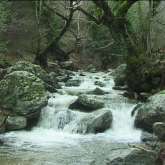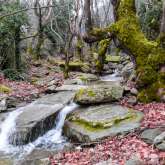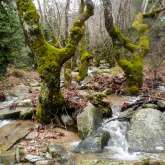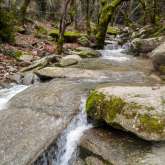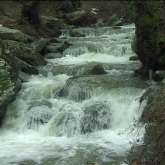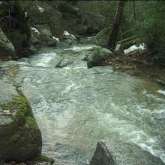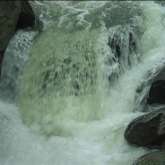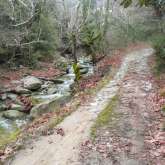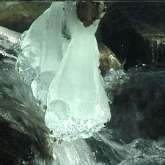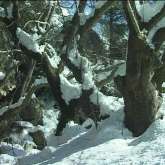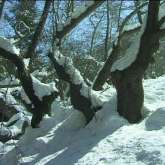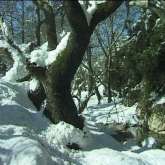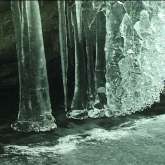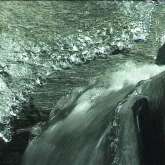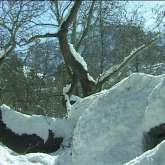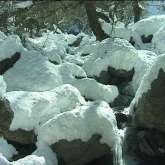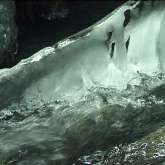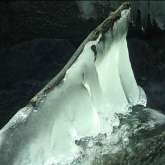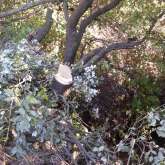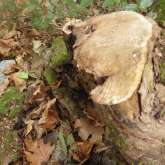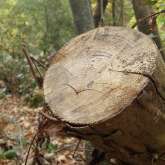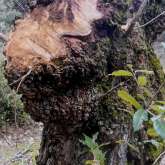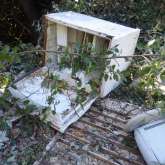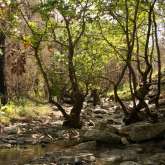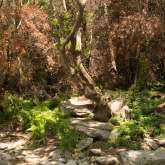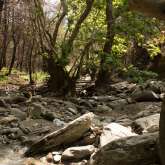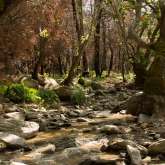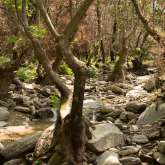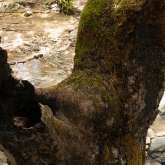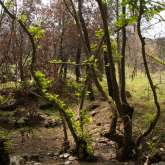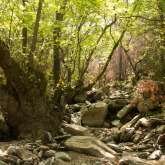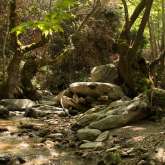The hidden ground
A hidden natural paradise in the gorge below Kazaviti. For most visitors this magic spot remains hidden. In early times the the lime kiln was located there. Cultural terraces reached to the creek. The cultivation was abandoned a long time ago and nature recaptured the area. The entire area of the gorge above and below Kazaviti forms a unique biotope. A paradise for countless insects, reptiles, amphibians, small mammals and bird species. Many protected species find a refuge here. Official protection would be urgently needed. Unfortunately, there is currently nothing to be expected from the official side. The added value of nature reserves for the locals and tourism currently plays no role on Thassos. Unfortunately, it is rather the opposite. More and more areas are irretrievably destroyed. Following generations will find a destroyed environment. The crisis and the fast money making are the driving force of the current development.
If you follow the stream beside the old road down the valley, you come to a steeply sloping bottleneck. Mighty rocks pile up. Below this point is the confluence of the large and small stream. Here the gorge widens and the hidden ground begins. A very pristine landscape with a magical atmosphere.
Mythical creatures
Big, ancient plane trees characterize the picture. They are overgrown with moss and spread a magical atmosphere. Large stone slabs complete the picture.
Gurgling streams in autumn, winter and spring
When the heavy rains start to fall in late autumn, the creek bed gradually fills with water again. Wafts of mist run through the treetops and make the forces of nature very noticeable. The sound of the stream can be heard throughout the village. During the summer months, the stream is dry. In some years, even in the cold season little water is visible on the surface. A possible indicator of climate change. The consequences of the forest fire should also leave noticeable problems. The forest was heavily destroyed in some places.
The snow covered winter landscape
In winter, the whole gorge is often covered with snow for a few days and sometimes even weeks. Ice sculptures form at the waterfalls. A very quiet, peaceful time.
The sad reality
Vandalism endangers large parts of the gorge. All areas accessible by car are threatened by uncontrolled logging and illegally dumped garbage.
The traces of the forest fire on September 10, 2016
Unfortunately, the gorge below Kazaviti was very much destroyed by the fire. The pines on the adjacent terraces are all burned. The old plane trees were not spared by the flames. The deciduous trees are recovering and leaves come out again. The pictures were taken one year after the fire. Meanwhile, the vegetation in this small area has continued to recover. On the burnt areas many plants spread out. The whole area is now even more important for birds, reptiles and amphibians than before. Since the forest burned down on both sides of the gorge, this is the only small remaining refuge area. Unfortunately, only a few people are interested in this topic.
Here is an excerpt of the occurring species in the valley of Kazaviti:
Mammals:
- Etruscan shrew (Suncus etruscus), the world’s smallest mammal
- Greater horseshoe bat (Rhinolophus ferrumequinum), strictly protected species
- Lesser horseshoe bat (Rhinolophus hipposideros), strictly protected species
- Tawny owl (Strix aluco), strictly protected species
- Alcathoe bat (Myotis alcathoe), strictly protected species
- Common noctule (Nyctalus noctula), strictly protected species
- European free-tailed bat (Tadarida teniotis), strictly protected species
- Lesser noctule or Leisler’s bat (Nyctalus leisleri), strictly protected species
- Blasius-Hufeisennase (Rhinolophus blasii), strictly protected species
Amphibians:
- European toad (Bufotes viridis)
- Oriental common toad (Bufo bufo)
- Spring frog (Rana dalmatina), strictly protected species
Reptiles:
- Greek tortoise (Testudo hermanni), strictly protected species
- Leopard snake (Zamenis situla), strictly protected species
- Four-lined snake (Elaphe quatuorlineata), species to be protected
- Montpellier snake (Malpolon monspessulanus)
- Sheltopusik (Pseudopus apodus)
- Western green lizard (Lacerta bilineata)
Birds:
- Eurasian hoopoe (Upupa epops)
- Eurasian golden oriole (Oriolus oriolus)
Goat’s milkweed (Caprimulgus europaeus)
Diese Seite teilen
Diese Seite ist auch in: Deutsch verfügbar



